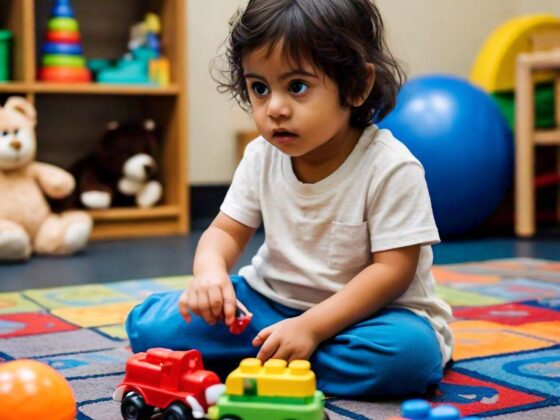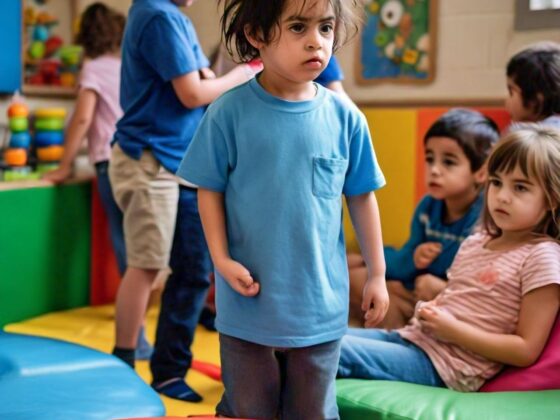Introduction to Communication Disorders and Neurodevelopmental Indicators:
Communication Disorders: A lot may be learned about how our brains grow differently from communication disorders, such as difficulty understanding people or communicating clearly. They resemble little hints that assist us in comprehending differences in the development and functionality of our brains. Imagine that you are attempting to talk to pals and the words are just not coming out correctly. Alternatively, despite your best efforts, you are unable to understand what someone is saying to you. That’s how it is for those who suffer from communication difficulties. It’s not merely a minor problem; it might significantly affect their life. We will go into the significance of these illnesses in this piece. We’ll discuss their prevalence and the effects they have on people. Primarily, we will investigate their connection to variations in the way our brains grow. Are you ready to link brain development with communication?

Explaining Communication Disorders :
Communication disorders are a broad category of difficulties that impede people’s ability to communicate, understand others, and interact socially. Understanding the different kinds of these illnesses is crucial to appreciate their intricacy.
First of all, speaking fluently, articulating words, or creating sounds are all challenges associated with speech problems. Stuttering is a speech impediment that causes speech flow problems. Articular abnormalities are characterized by persistent mispronunciation of specific sounds. For example, someone might find it difficult to pronounce the “r” or “th” sounds.
Second, problems using and comprehending language are a part of language disorders. This includes having trouble with syntax, vocabulary, or creating cohesive phrases. A language problem, for example, may make it difficult for a youngster to understand instructions or articulate their ideas clearly.
Finally, social communication impairments affect a person’s capacity to utilize language correctly in social situations. Understanding nonverbal clues, carrying on conversations, and adhering to social standards in social situations can be difficult for those with this illness. They could struggle to keep eye contact, comprehend jokes, or take turns in talks, for instance.
Causes of Communication Disorder:
Disorders related to brain structure or function might be biological causes of communication problems. Skills related to speech, language, and social communication can be impacted by certain neurological diseases, including autism spectrum disorder and cerebral palsy. Furthermore, because these conditions can run in families, genetic factors may predispose people to them.
There are important environmental factors as well. During pregnancy, exposure to chemicals in the environment or substances like alcohol or tobacco might affect fetal development and raise the chance of communication difficulties. Developmental delays that impact communicative abilities can also be caused by preterm birth or low birth weight.
To further address communication difficulties, socioeconomic variables can affect how easily people can access resources and support services. Communication difficulties in children from underprivileged homes may be made worse by obstacles to early intervention and therapy.
Global Picture of Communication Disorders:
Millions of people in all age groups and cultural backgrounds are affected by the widespread prevalence of communication problems worldwide. Communication issues are frequently caused by disabling hearing loss, which is estimated to affect over 5% of the world’s population or 466 million people, according to the World Health Organization (WHO). Furthermore, according to the American Speech-Language-Hearing Association (ASHA), 7-8% of young children have a speech or language impairment. Furthermore, differences in access to diagnosis and intervention services further compound the issue, as the prevalence of communication problems varies by geography and socioeconomic circumstances. The global burden of communication disorders is significantly increased by these figures, underscoring the necessity of increasing awareness and strengthening support networks for those who are impacted.

Neurodevelopmental concept :
Natural differences in the way each person’s brain grows and functions are referred to as neurodevelopmental variance. Because the structure and function of the brain affect how we perceive, interpret, and generate language and social communication cues, this diversity is critical in determining communication ability.
Differentiations in the structure and function of the brain can cause problems with communication in many ways. For example, difficulty understanding or generating speech may result from abnormalities in the development of language centers in the brain. Similar to this, changes in the areas of the brain that handle social cues might cause problems deciphering nonverbal clues like body language or facial expressions.
There is a strong correlation between communication difficulties and neurodevelopmental diseases including attention-deficit/hyperactivity disorder (ADHD) and autism spectrum disorder (ASD). Social communication and interaction are frequently challenging for people with ASD; examples include trouble keeping eye contact or comprehending social rules. Similarly, vocal communication, mental organizing, and maintaining focus during conversations can be difficult for those with ADHD.
Furthermore, many illnesses that also affect communication skills frequently co-occur with neurodevelopmental problems. Individuals diagnosed with Autism Spectrum Disorder (ASD) may also experience additional difficulty with communication due to intellectual limitations or difficulties with sensory processing. Creating specialized interventions and support plans for people impacted by neurodevelopmental variation and communication difficulties requires an understanding of these intricate relationships.
Detection & Intervention:
To provide prompt intervention and support, which can greatly improve outcomes for afflicted persons, early recognition of communication difficulties is essential. Early detection of communication difficulties enables experts to put in place the right interventions to deal with these problems before they worsen and affect a child’s development in several ways.
Children with communication impairments are identified using a variety of screening techniques and evaluation instruments. These include surveys for parents or caregivers regarding their child’s communication skills and behaviors, observations of communication skills during play or interaction, and standardized tests. To exclude hearing loss as a possible reason for communication problems, hearing screenings may also be carried out.
By offering specialized assistance and therapy catered to each child’s unique requirements, early intervention programs are essential in treating communication difficulties in children. To encourage efficient communication techniques at home, these programs may incorporate parent education sessions, social skills training, and speech-language therapy. Early intervention helps kids improve their social connections, acquire critical communication skills, and live better overall.
Complex Interplay in Communication Disorders:
Studies on genetics and familial patterns show that hereditary variables are important in the development of communication problems. Speech, language, or social communication problems may be inherited by individuals due to certain genetic variants or mutations. Nevertheless, these genetic predispositions interact with different environmental factors during development to determine how they manifest, rather than being purely genetically determined.
Environmental elements can affect fetal brain development and play a role in communication difficulties. These include prenatal exposure to chemicals, maternal health, and diet. Furthermore, socioeconomic position can affect a person’s ability to access tools and services that are essential for resolving communication difficulties. These communication problems can be made worse for kids from underprivileged homes. It could be with increased stress, restricted access to high-quality education, or less opportunity for language-rich interactions.
Communication abilities are also greatly influenced by early experiences, including exposure to language, interactions with parents, and socialization chances. Communication skills may be hampered by negative early experiences or insufficient language exposure. Whereas positive early experiences can promote healthy language development.
Comprehensive Approaches to Communication Disorders :
An all-encompassing strategy that takes into account environmental factors as well as genetic predispositions is necessary to effectively address communication difficulties. Healthcare practitioners can create tailored solutions that cater to the specific requirements of each person by acknowledging the intricate relationship between genetic factors and environmental exposures. In addition to facilitating individualized treatment programs that consider genetic vulnerabilities in addition to environmental stressors or protective variables, this holistic approach allows a greater knowledge of the underlying mechanisms causing communication issues. Furthermore, early identification of at-risk individuals and proactive intervention techniques are made possible by combining genetic screening with assessments of environmental risk factors. Adopting such all-encompassing methods will help us prevent, identify, and treat communication disorders more successfully. Which will eventually improve the quality of life and outcomes for those who are impacted by these problems.
Commonly Asked Questions:
1)What are communication disorders?
Communication disorders affect an individual’s ability to receive, process, send, or understand verbal, nonverbal, or graphic language.
2)How can communication disorders indicate neurodevelopmental variations?
Communication challenges are often linked to neurodevelopmental conditions like autism, ADHD, or language disorders, highlighting differences in cognitive or social development.
3)What types of communication disorders are common in neurodevelopmental variations?
Common types include speech sound disorders, expressive and receptive language disorders, social communication disorder, and stuttering.
4)How early can communication disorders be identified in children?
Signs may appear as early as 18 months to 2 years, with delays in speech, limited vocabulary, or difficulty understanding language often noticed first.
5)How do communication disorders impact social interactions?
Difficulty expressing thoughts, interpreting social cues, or following conversations can make socializing challenging, potentially leading to social withdrawal.
6)What role do speech-language therapists play in managing communication disorders?
Speech-language therapists assess, diagnose, and create individualized therapy plans to improve communication skills in children and adults.
7)Can communication disorders improve over time?
With early intervention and consistent therapy, many individuals see improvement, although progress varies depending on the disorder and neurodevelopmental condition.
8)Are communication disorders genetic?
Genetics can play a role, as certain neurodevelopmental conditions with communication challenges, like autism or specific language impairments, have hereditary links.
9)What resources can help parents support children with communication disorders?
Parents can access speech therapy, early intervention programs, support groups, and educational materials to aid their child’s development.
Conclusion:
Disorders related to communication provide important insights into the complex mechanisms of the human brain. They demonstrate the various ways in which our brains grow and work. Illuminating the intricacies of social interaction and human intellect. Imagine how frustrating it would be to have communication difficulties and find it difficult to communicate or comprehend others. These difficulties, however, have a substantial impact on people’s lives and are not unimportant. Understanding communication problems is crucial, as has been shown by this article’s exploration of their global incidence and relationship to neurodevelopmental variance. The need for prompt identification and timely intervention has been underscored. Along with the necessity of all-encompassing strategies that take into account hereditary inclinations and contextual factors. Our ability to support people with communication difficulties and improve their communication abilities. Thus general quality of life can both be increased by adopting such holistic solutions.







